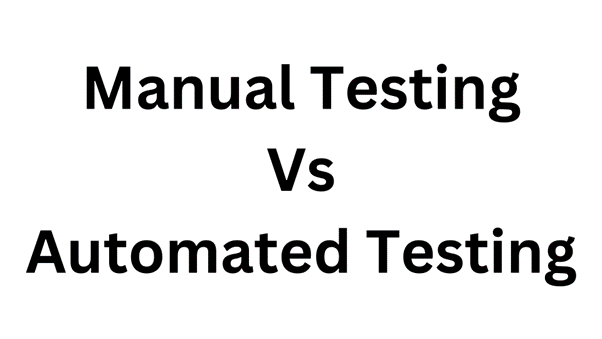Manual testing and automation testing are two approaches to software testing, with key differences in how they are carried out and the benefits they offer. Here are the main differences between manual and automation testing:
Testing Approach:
Manual testing involves human testers manually executing test cases and verifying the expected outcomes against the actual results. It requires human intervention at each step of the testing process, including test case creation, test execution, and result analysis. On the other hand, automation testing involves the use of software tools to automate the execution of test cases and the comparison of actual results with expected outcomes.
Test Case Creation:
In manual testing, test cases are created and documented manually by testers based on their understanding of the application under test (AUT) and its requirements. In automation testing, test cases are written in a programming language or a script using automation testing tools, which can automatically generate test cases or convert manual test cases into automated scripts.
Test Execution:
In manual testing, test cases are executed by human testers who manually perform actions on the AUT, observe the results, and record them. In automation testing, test cases are executed by automation tools that run the automated scripts and perform actions on the AUT, compare the results with expected outcomes, and generate test reports.
Test Maintenance:
In manual testing, if there are changes in the AUT, the test cases need to be updated manually, which can be time-consuming and prone to human error. In automation testing, if there are changes in the AUT, the automated scripts may need to be updated to reflect those changes, which can be faster and more efficient compared to manual testing.
Test Speed and Efficiency:
Automation testing is generally faster and more efficient compared to manual testing, as automated scripts can execute repetitive tasks quickly and accurately, and can be run multiple times with different data sets. Manual testing, on the other hand, relies on human testers who may be slower in execution and may not be as consistent in their results.
Test Coverage:
Automation testing is typically well-suited for repetitive tasks and large-scale testing efforts, which can result in higher test coverage. Due to time and resource constraints, manual testing may have limitations regarding test coverage.
Human Judgement:
Manual testing allows for human judgment and intuition, as testers can apply their domain knowledge, experience, and creativity to identify defects that automated scripts may not catch. Automation testing, on the other hand, relies solely on predefined test cases and may not catch defects that require human intuition.
Cost and Time:
Automation testing may require an initial investment in automation tools and infrastructure setup, which can increase upfront costs. However, automation testing can be cost-effective and time-saving over the long run. It can help catch defects early in development and reduce the need for repetitive manual testing. Manual testing may be more cost-effective in small-scale testing efforts or when human judgment is critical.
Conclusion
In summary, manual and automation testing have key differences in testing approach, test case creation, test execution, test maintenance, test speed and efficiency, test coverage, human judgment, and cost and time considerations. The choice between manual and automation testing depends on the software testing effort’s specific requirements, resources, and goals. Both approaches have their strengths and weaknesses, and a combination of both manual and automation testing may be ideal in many testing scenarios.
As a leading IT Institute in Pune we offer Software Testing Classes in Pune.







